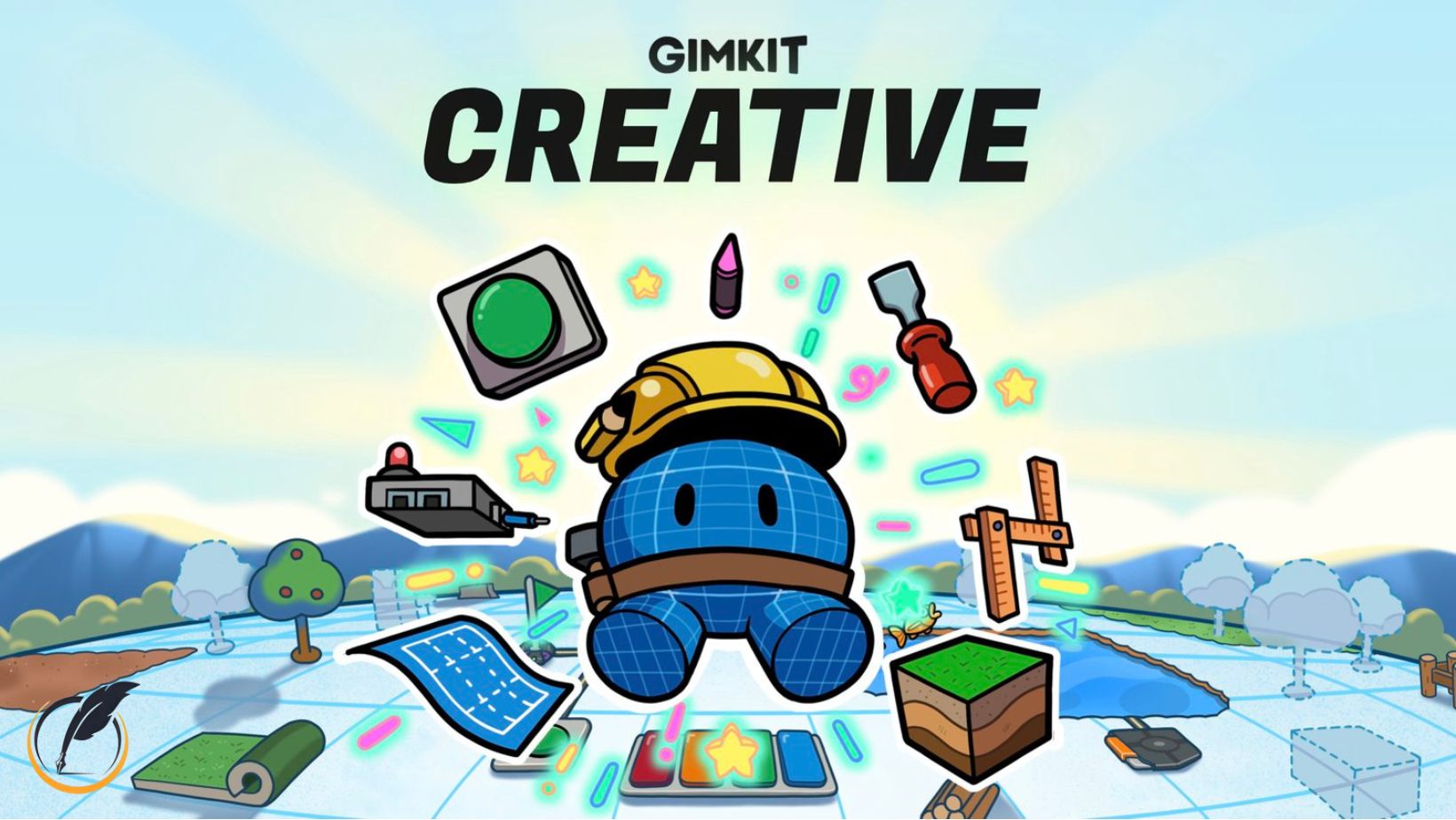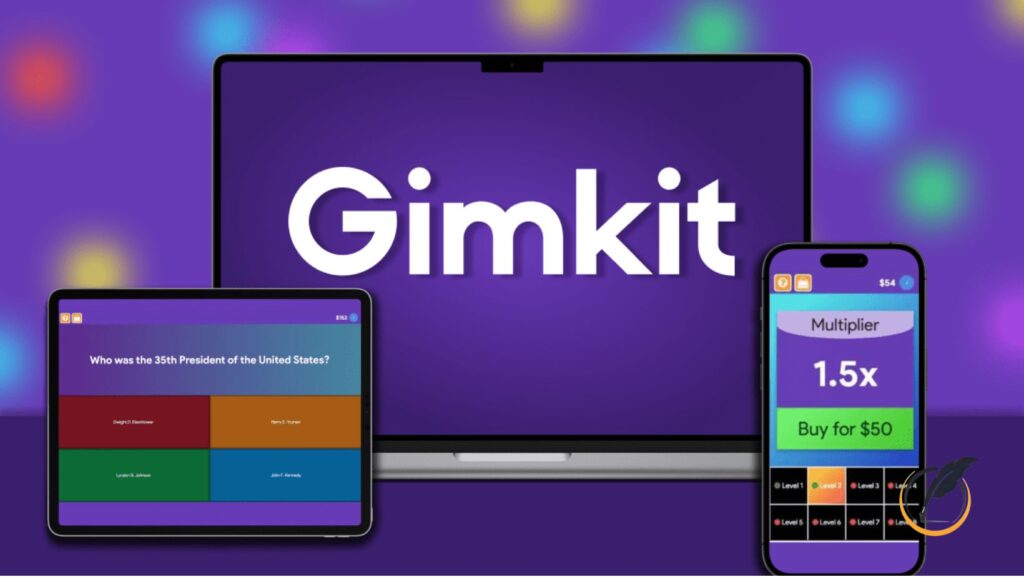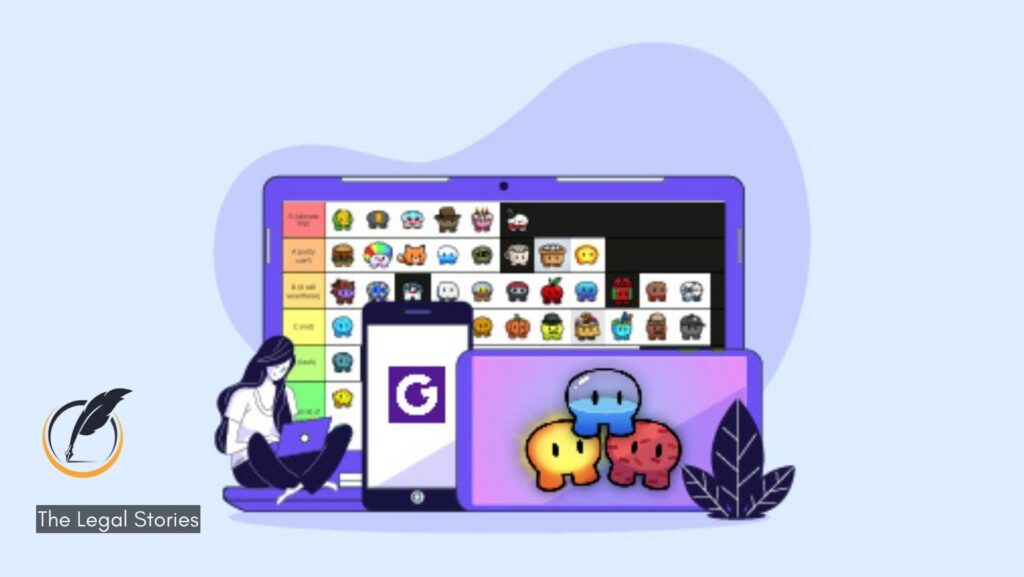As an educator, you’re always searching for ways to make learning fun, interactive, and effective. Gimkit, a game-based learning platform, has become a go-to tool for transforming dull review sessions into exciting, competitive games that students can’t resist.
At the core of Gimkit’s magic is the Gimkit Create feature, which allows teachers to craft custom question sets (called “Kits”) tailored to their lessons.
Whether you’re building a Kit from scratch or importing existing content, Gimkit Create empowers you to design engaging activities that boost student retention and enthusiasm.
In this article, I’ll guide you through everything you need to know about Gimkit Create.
From creating your first Kit to leveraging recent updates and optimizing for engagement, this guide is packed with actionable tips drawn from my classroom experience.
What Is Gimkit Create?
Gimkit is an interactive learning platform launched in 2017 by high school student Josh Feinsilber.
It turns traditional quizzes into gamified challenges where students answer questions to earn virtual currency and spend it on strategic power-ups, blending the excitement of Kahoot! with the study focus of Quizlet.
The Gimkit Create feature is the toolset that lets teachers build custom question sets, known as “Kits,” which form the foundation of live games and homework assignments.
With Gimkit Create, you can craft Kits from scratch, import questions from Quizlet, or upload spreadsheets for bulk creation.
These Kits can be used in various game modes (e.g., Classic, Fishtopia) or assigned as asynchronous homework, making them versatile for in-person, hybrid, or remote learning.
The feature is accessible via the Gimkit Dashboard after logging into www.gimkit.com and is designed to be intuitive for educators of all tech levels.
Why You Should Use Gimkit Create?
- Customization: Tailor questions to your curriculum and student needs.
- Engagement: Gamified Kits make learning fun and memorable.
- Flexibility: Use Kits for live games, homework, or collaborative activities.
- Time-Saving: Import or share content to streamline prep.
- Data-Driven: Pair Kits with Gimkit’s analytics to assess student understanding.
How Do I Use Gimkit Create?
Creating a Kit with Gimkit Create is straightforward, whether you’re starting from scratch or leveraging existing resources.
Below, I’ll walk you through the process, highlight recent updates, and share tips to make your Kits shine.
Step 1: Access the Gimkit Dashboard
To use Gimkit Create, you need a Gimkit account:
- Visit the Gimkit Website: Go to www.gimkit.com and click “Sign Up” or “Log In.”
- Create an Account (if new):
- Choose a plan: The free plan (limited to 3 Kits and 5 students per live game) or the Pro plan ($14.99/month or $59.88/year) with unlimited features.
- Sign up with your Google account or an email and password. A school email integrates with Google Classroom.
- Verify your email via the inbox link.
- Complete your profile with your name, role (teacher), and school.
- Log In: Use your credentials or Google single sign-on to access the Gimkit Dashboard.
Pro Tip: The Gimkit Pro plan unlocks unlimited Kits, image uploads, and premium game modes, enhancing Gimkit Create. Check the pricing page for details.
Step 2: Navigate to the Kits Tab
Once logged in, the Gimkit Dashboard displays the Kits Tab, your hub for Gimkit Create:
- Click “Kits” to view existing Kits or create new ones.
- Use folders to organize Kits by subject or unit (e.g., “Science,” “Grade 7 Math”).
- Access the School Library to copy Kits shared by colleagues.
Recent Update: The School Library feature lets teachers at the same school share and copy Kits, saving prep time. Update your school info in Settings to enable this.
Step 3: Create a New Kit
Here’s how to build a Kit using Gimkit Create:
- Click “New Kit”: In the Kits Tab, select “New Kit” to start.
- Choose a Creation Method:
- From Scratch: Manually enter questions and answers for full customization.
- Import from Quizlet: Paste a Quizlet study set URL to import questions instantly.
- CSV Upload: Upload a spreadsheet in Gimkit’s format for bulk creation.
- Add Questions:
- Question Text: Write a clear question (e.g., “What is the primary source of energy for Earth’s climate system?”).
- Correct Answer: Provide the answer (e.g., “The Sun”).
- Incorrect Answers (optional): Add up to three incorrect options for multiple-choice (e.g., “The Moon,” “Volcanoes,” “Oceans”).
- Category: Tag the question (e.g., “Earth Science”) for organization.
- Image (Pro only): Upload an image to enhance visual learning (e.g., a diagram of the solar system).
- Save Your Kit: Name it descriptively (e.g., “Grade 6 Earth Science Review”) and save.
Example: For a history Kit:
- “Who led the Montgomery Bus Boycott?” (Answer: Martin Luther King Jr.)
- “What year was the Declaration of Independence signed?” (Answer: 1776)
Recent Update: The Read to Me feature reads questions and answers aloud in the Kit’s language during games or assignments, improving accessibility for younger students or those with reading difficulties.
Step 4: Enhance Your Kit with Advanced Features
Gimkit Create offers tools to make your Kits more engaging:
- Mix Question Types: Combine multiple-choice and text-entry questions to challenge different skills.
- Use KitCollab: Allow students to submit questions for the Kit, fostering collaboration. Share a KitCollab link via the Kits Tab.
- Add Images (Pro only): Include visuals for subjects like biology (e.g., a cell diagram) or geography (e.g., a map).
- Preview Your Kit: Test questions in preview mode to catch errors before use.
Recent Update: KitCollab is now separate from live games, allowing asynchronous student contributions, perfect for building Kits collaboratively over time.
Step 5: Use Your Kit
Once created, your Kit can be:
- Hosted in a Live Game: Select the Kit, choose a game mode (e.g., Classic, Fishtopia), and generate a Gimkit Live code.
- Assigned as Homework: Use the Assignments Tab to create a Gimkit Home task with a unique link.
- Shared with Colleagues: Add the Kit to the School Library for others at your school to use.
Recent Update: A weighted question system prioritizes questions students miss in subsequent rounds or retries, helping reinforce weak areas.
Gimkit Create Kit
“Gimkit Create Kit” refers to the process of building a question set. Key tips:
- Align questions with lesson objectives.
- Use clear, concise wording to avoid confusion.
- Test Kits in preview mode to ensure accuracy.
Gimkit Question Sets
“Gimkit question sets” are synonymous with Kits. They can include:
- Multiple-choice or text-entry questions.
- Images (Pro only) for visual subjects.
- Categories for organization and reporting.
Gimkit Custom Content
“Gimkit custom content” highlights the ability to tailor Kits to your curriculum. Gimkit Create supports:
- Manual question creation for precise control.
- Importing from Quizlet for efficiency.
- Student-generated questions via KitCollab.
Gimkit Classroom Content
Gimkit Create integrates with classroom workflows:
- Sync with Google Classroom via the Classes Tab to share Kits or assignment links.
- Use the School Library to access colleague-created content.
- Assign Kits as homework for remote or hybrid learning.
Gimkit Create Updates
Recent updates enhance Gimkit Create:
- School Library: Share and copy Kits with school colleagues.
- KitCollab Revamp: Asynchronous student question submissions.
- Read to Me: Audio support for questions.
- Weighted Questions: Prioritize missed questions for better learning outcomes.
- Image Uploads (Pro): Add visuals to questions for richer content.
These updates make Gimkit Create more collaborative and accessible.
Tips for Crafting Engaging Kits with Gimkit Create
To make your Kits stand out, try these tips based on my experience and community insights:
1. Align with Learning Objectives
Ensure questions reinforce key concepts. For a math Kit:
- “Solve: 2x + 5 = 11” (Answer: x = 3)
- “What is the area of a circle with radius 4?” (Answer: 16π)
2. Keep Questions Concise
Clear, direct questions maintain student focus. Instead of:
- “In which historical era did the Industrial Revolution take place?” Use:
- “When was the Industrial Revolution?” (Answer: 18th–19th centuries)
3. Incorporate Student Interests
Add pop culture references to spark engagement. For a literature Kit:
- “Which Harry Potter character would relate to The Outsiders’ Ponyboy?” (Answer: Harry Potter, open-ended)
4. Use Visuals (Pro)
For subjects like science, include images (e.g., a plant cell diagram) to support visual learners.
5. Collaborate with Students
Use KitCollab to let students submit questions, increasing ownership and engagement.
Troubleshooting Gimkit Create Issues
Here’s how to fix common Gimkit Create problems:
Problem: Kit Not Saving
- Solution: Ensure you’re clicking “Save” after editing. Refresh the page or try a different browser.
Problem: Quizlet Import Fails
- Solution: Verify the Quizlet URL is correct and public. Check that questions are in a compatible format.
Problem: Images Not Uploading (Pro)
- Solution: Confirm you have a Pro account. Ensure image files are supported (e.g., JPEG, PNG) and under size limits.
Problem: Questions Not Displaying Correctly
- Solution: Preview the Kit to catch formatting errors. Edit unclear questions or incorrect answers.
Problem: KitCollab Link Not Working
- Solution: Regenerate the KitCollab link in the Kits Tab. Ensure it’s shared with the correct students.
Gimkit Create Pricing: Free vs. Pro
Gimkit Create is available on both plans:
- Free Plan: Limited to 3 Kits, basic features, and 5 students per live game. Suitable for occasional use.
- Gimkit Pro: $14.99/month or $59.88/year. Includes unlimited Kits, image uploads, and premium modes.
My Take: For frequent Kit creation, the Pro annual plan saves nearly 50% and unlocks powerful features. Check Gimkit’s pricing page.
Gimkit Create vs. Other Platforms
How does Gimkit Create compare to content creation on Kahoot! or Quizizz?
| Feature | Gimkit Create | Kahoot! Creator | Quizizz Editor |
|---|---|---|---|
| Content Creation | Kits (manual, Quizlet, CSV) | Quizzes (manual, import) | Quizzes (manual, import) |
| Customization | Images (Pro), KitCollab | Slides, polls | Question types, memes |
| Free Plan Limits | 3 Kits | Generous free tier | Generous free tier |
| Unique Feature | School Library, weighted questions | Slide integration | Meme feedback |
| Best For | Strategic, collaborative content | Quick, engaging quizzes | Flexible, fun quizzes |
Why Gimkit Stands Out: Gimkit Create excels with its School Library, KitCollab, and strategic gameplay integration.
Real-World Impact of Gimkit Create
Educators praise Gimkit Create for its flexibility. A Gimkit blog post shared a story of a teacher who saved hours weekly using the School Library to access colleague Kits. Another saw a 25% boost in student engagement after using KitCollab to involve students in content creation.
In my classroom, Gimkit Create has streamlined lesson prep. The Read to Me feature has made Kits accessible to my diverse learners, and analytics from Kit-based games help me target instruction effectively.
Advanced Tips for Gimkit Create
Try these strategies to elevate your Gimkit Create skills:
- Batch Create with CSV: Upload multiple questions via a spreadsheet for efficiency.
- Theme Your Kits: Design holiday-themed Kits (e.g., a Halloween vocab quiz) for fun.
- Use KitCollab for Review: Have students create questions as a study activity.
- Share with Colleagues: Add Kits to the School Library to build a shared resource pool.
- Test Rigor: Include a mix of easy and challenging questions to cater to all learners.
Conclusion
Gimkit Create empowers you to craft engaging, curriculum-aligned question sets that make learning a joy.
From building custom Kits to leveraging updates like the School Library and Read to Me, this guide has equipped you to use Gimkit Create like a pro. Whether for live games or homework, your Kits will spark student enthusiasm and drive results.


